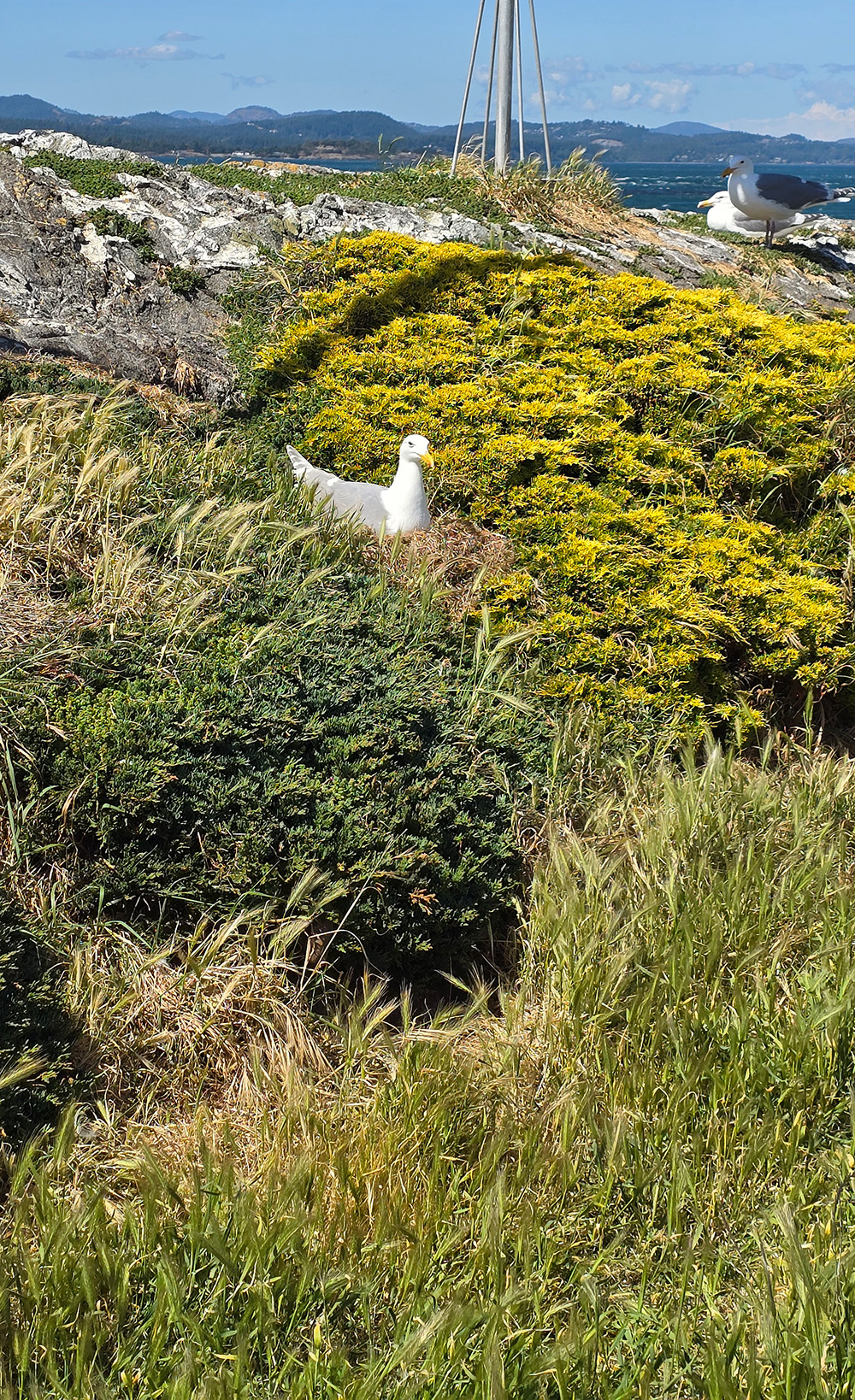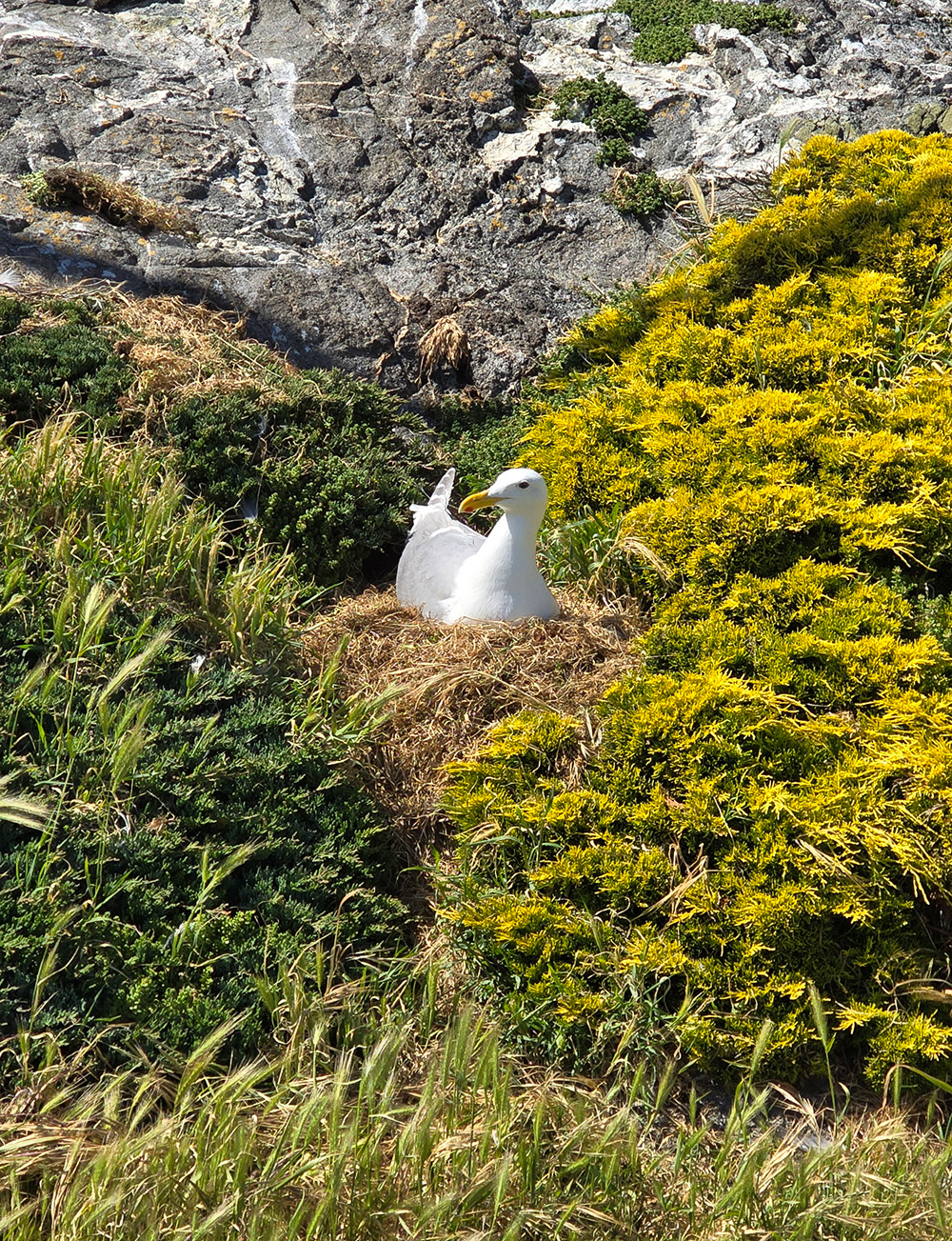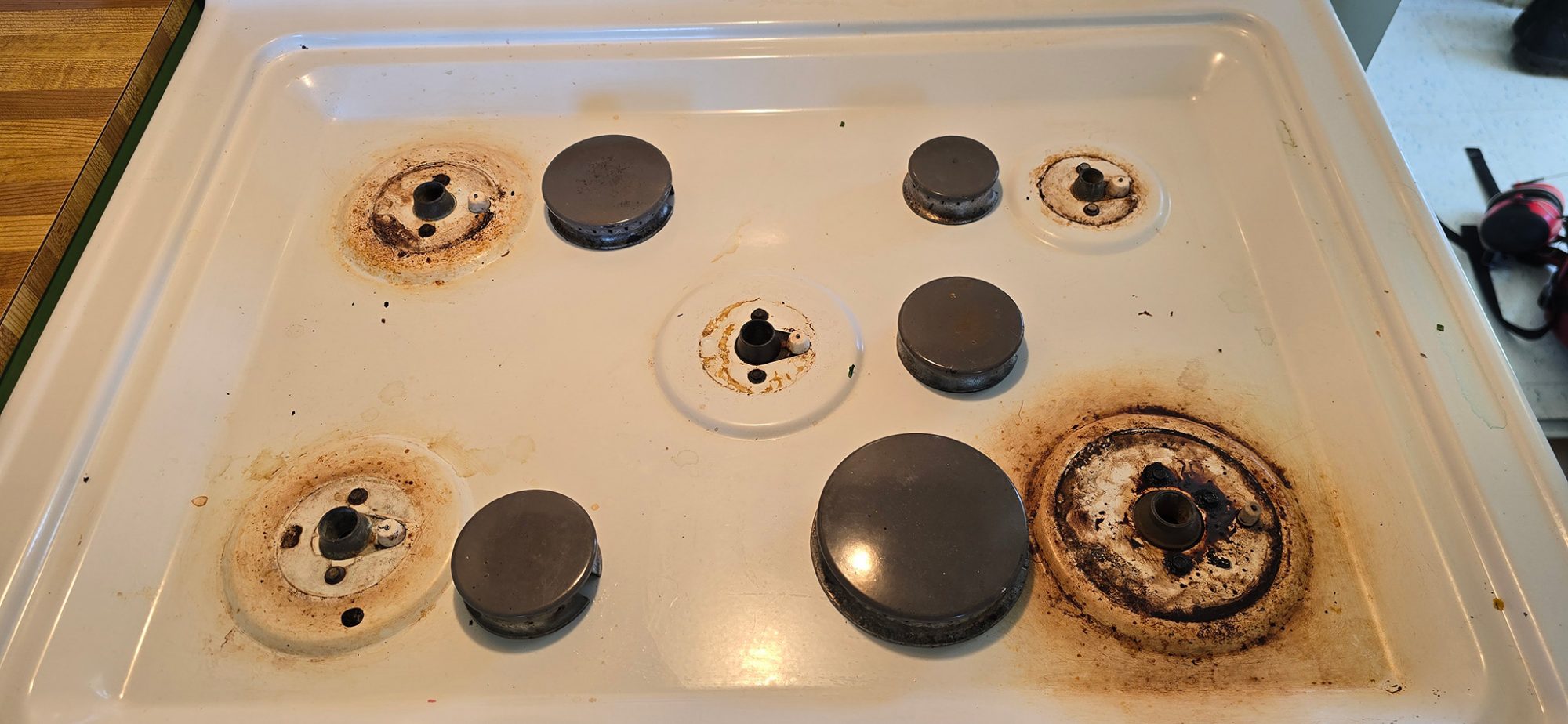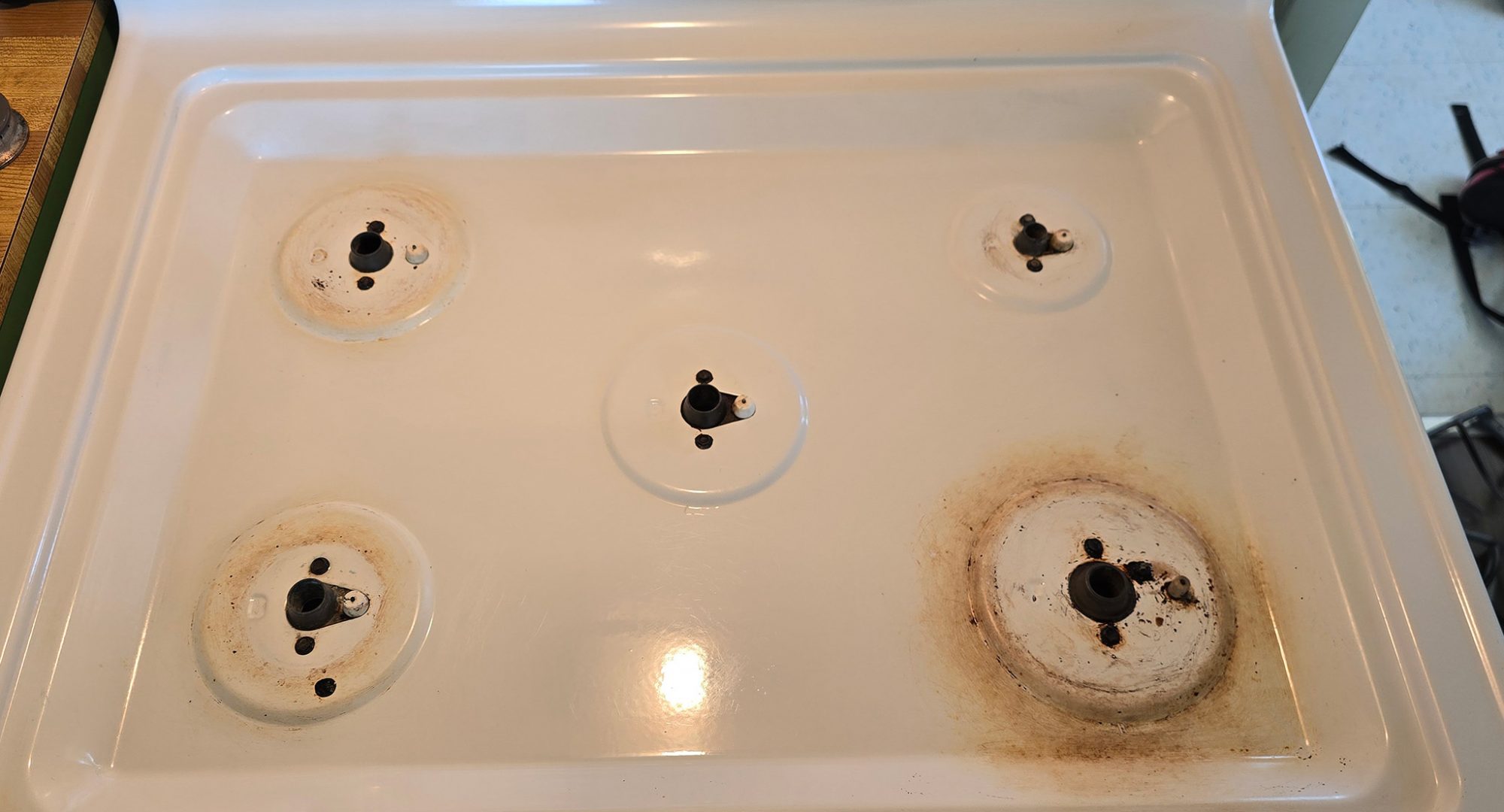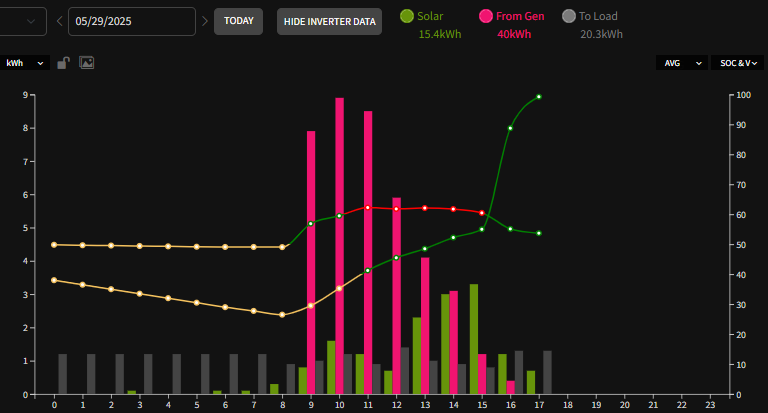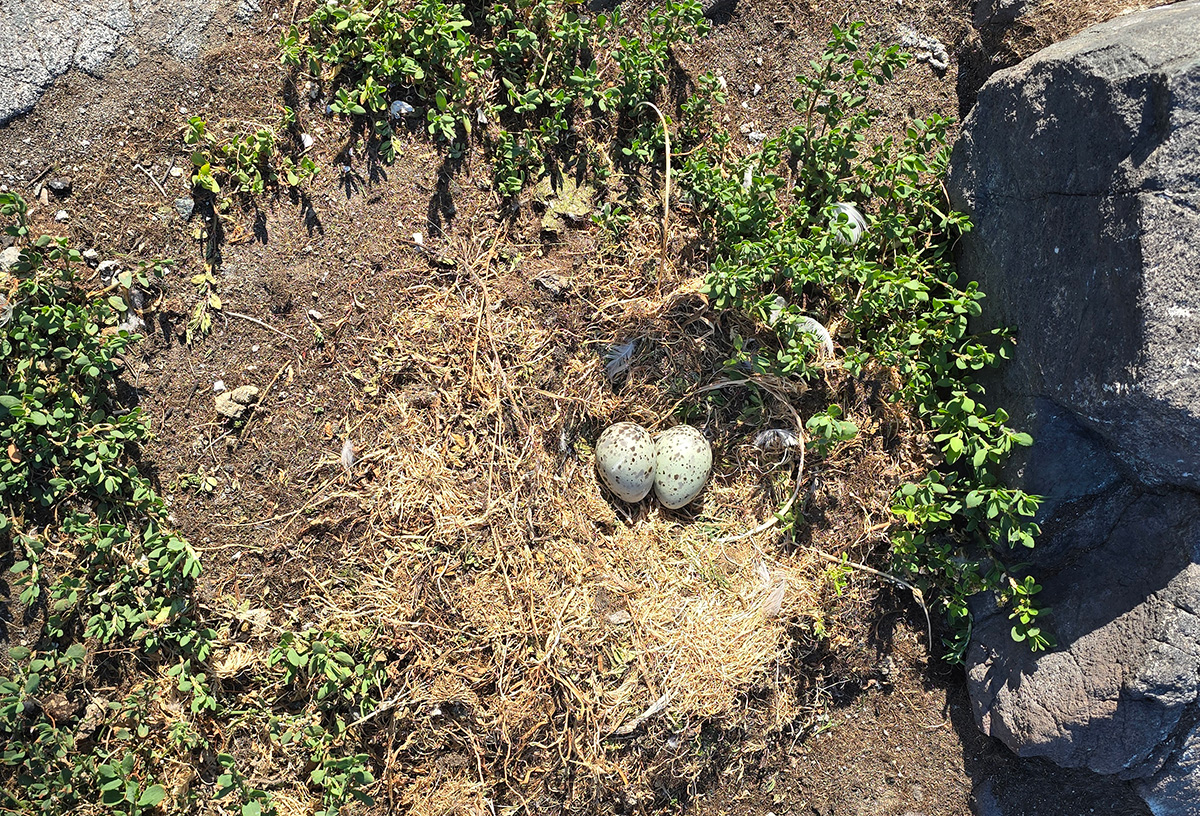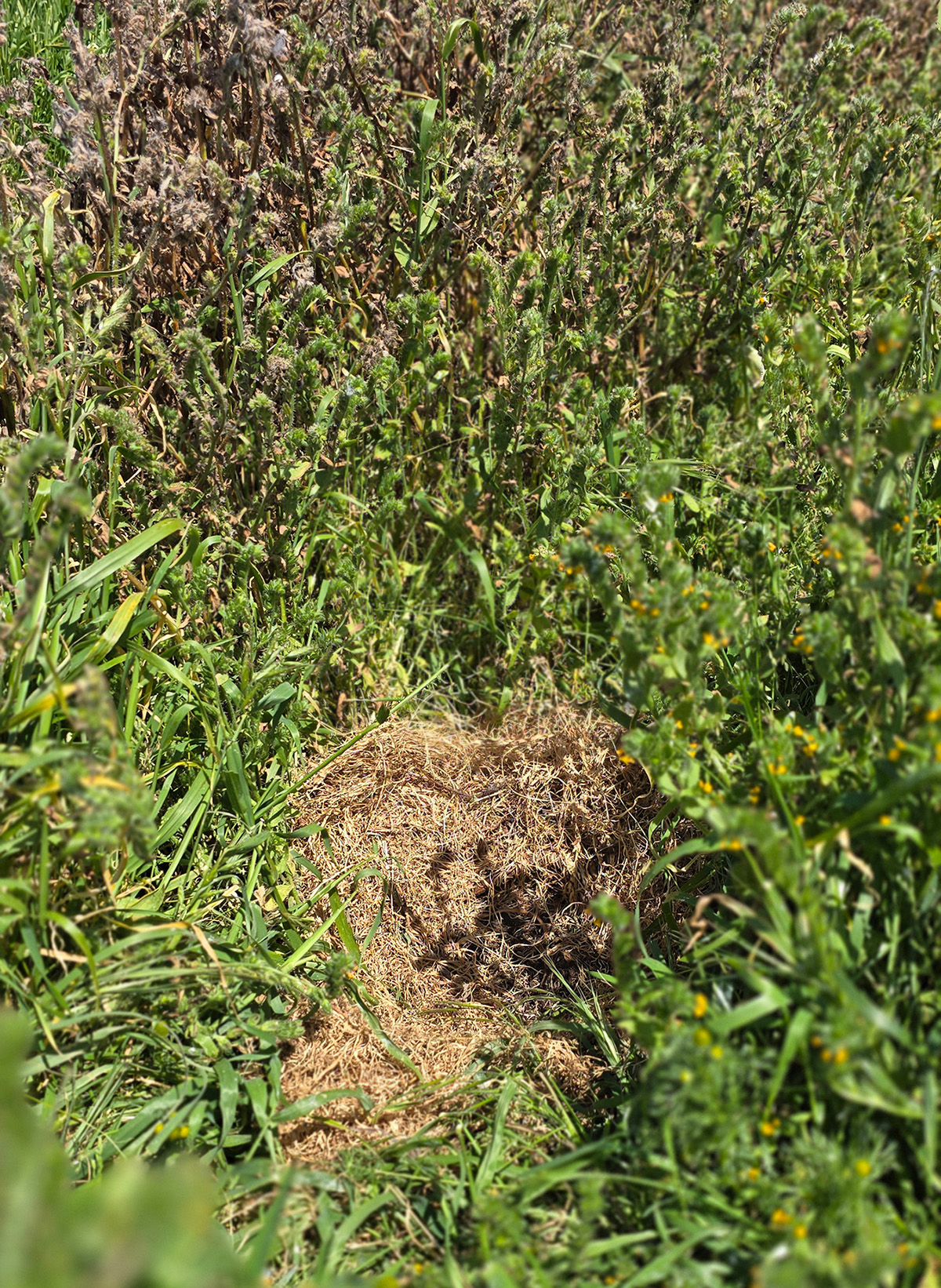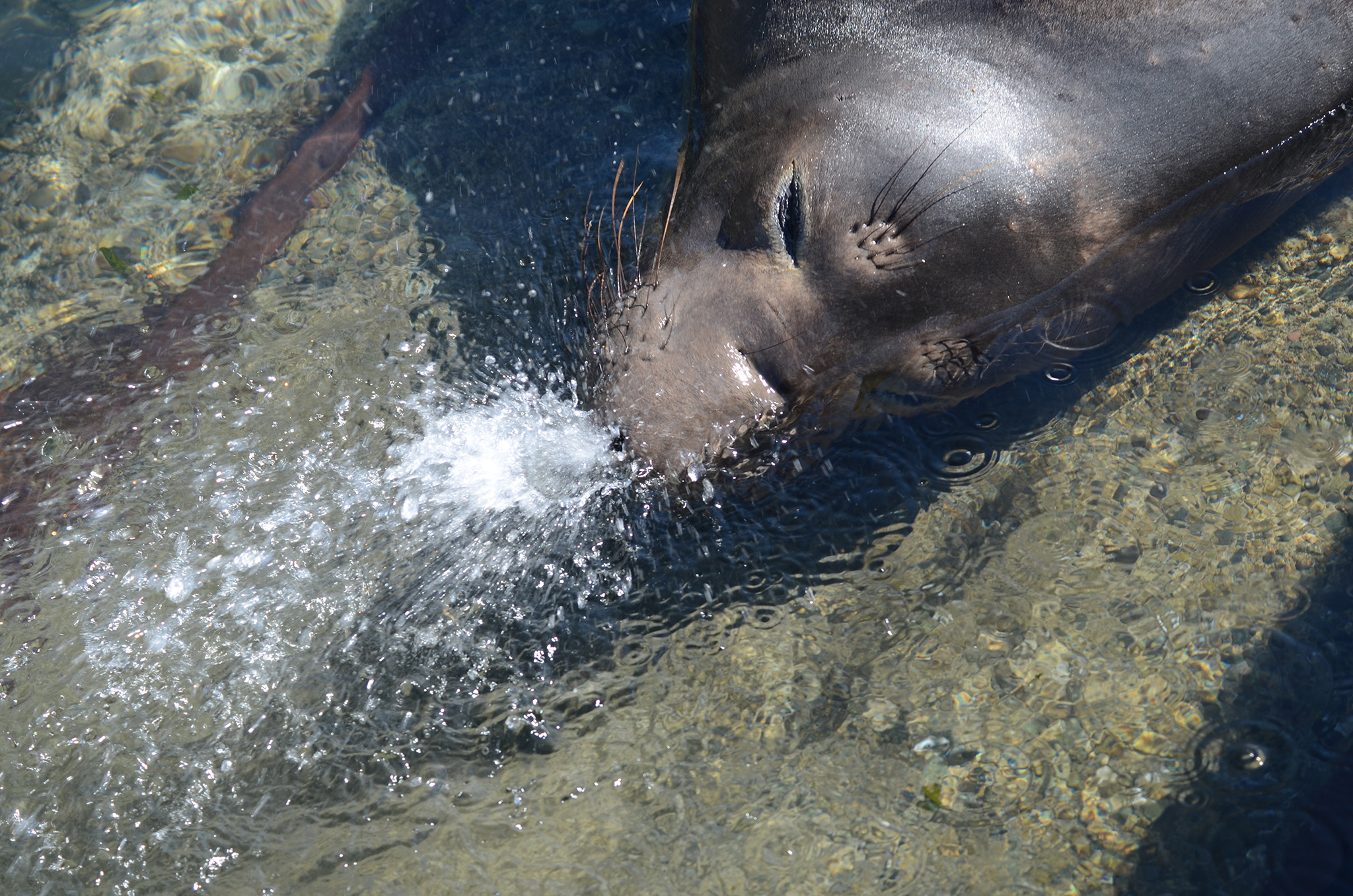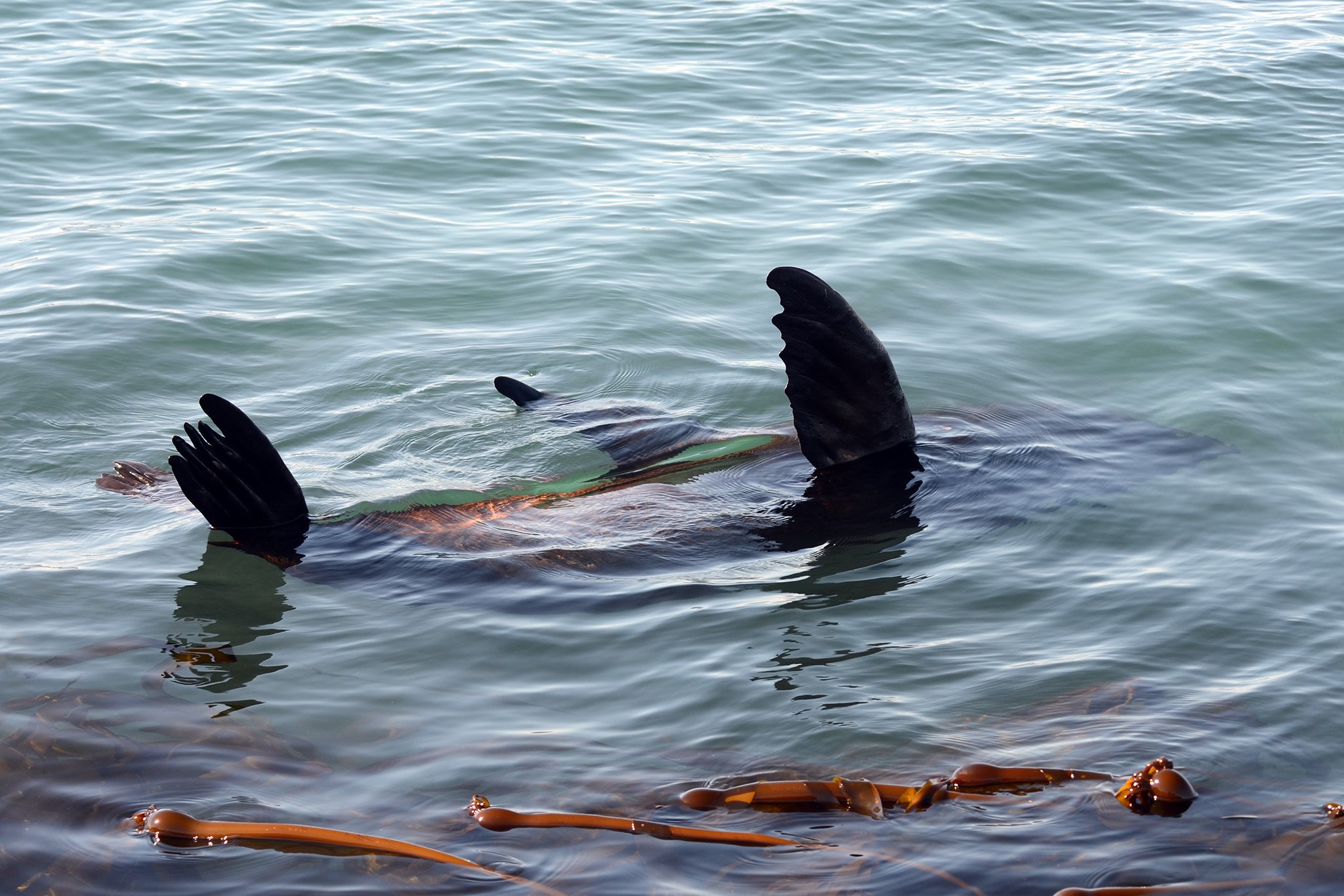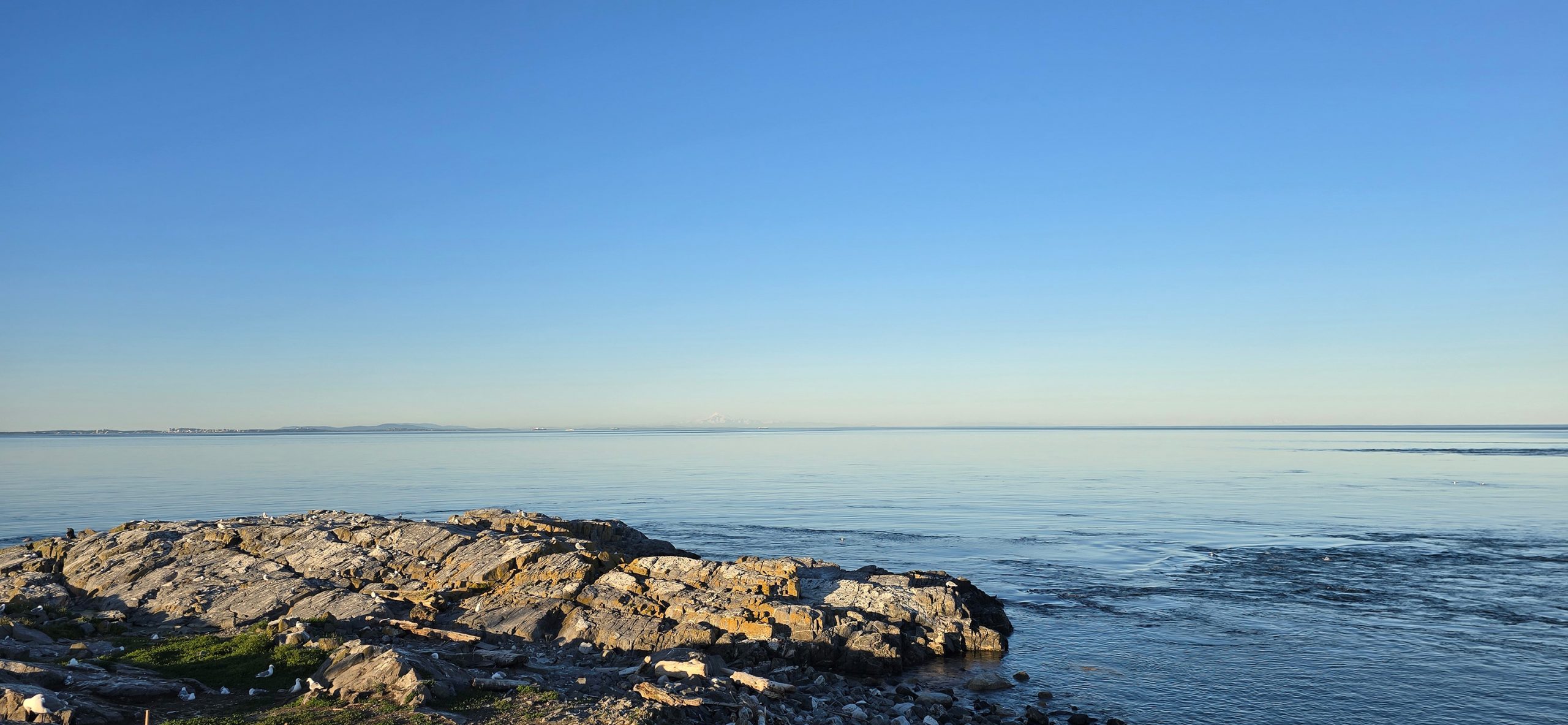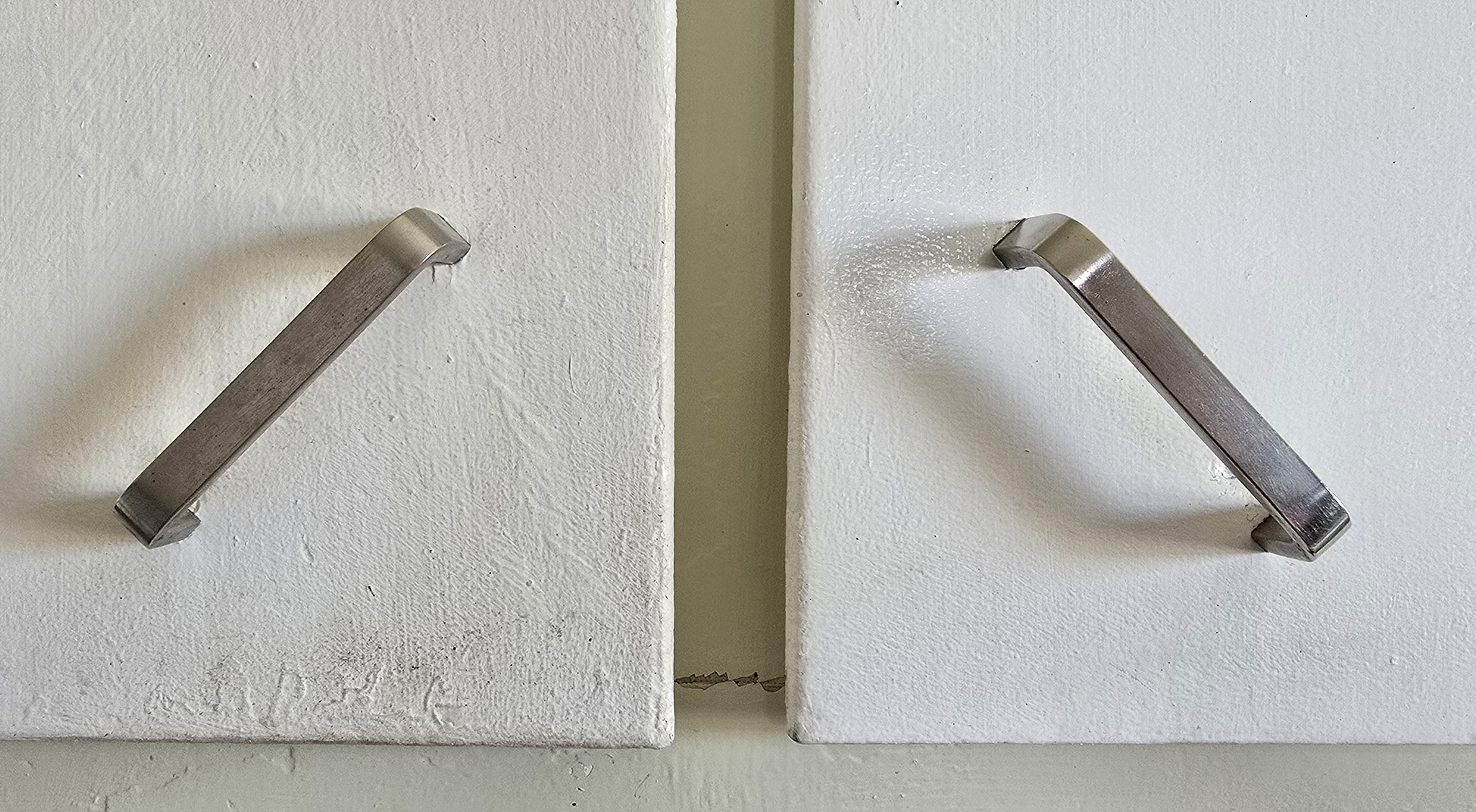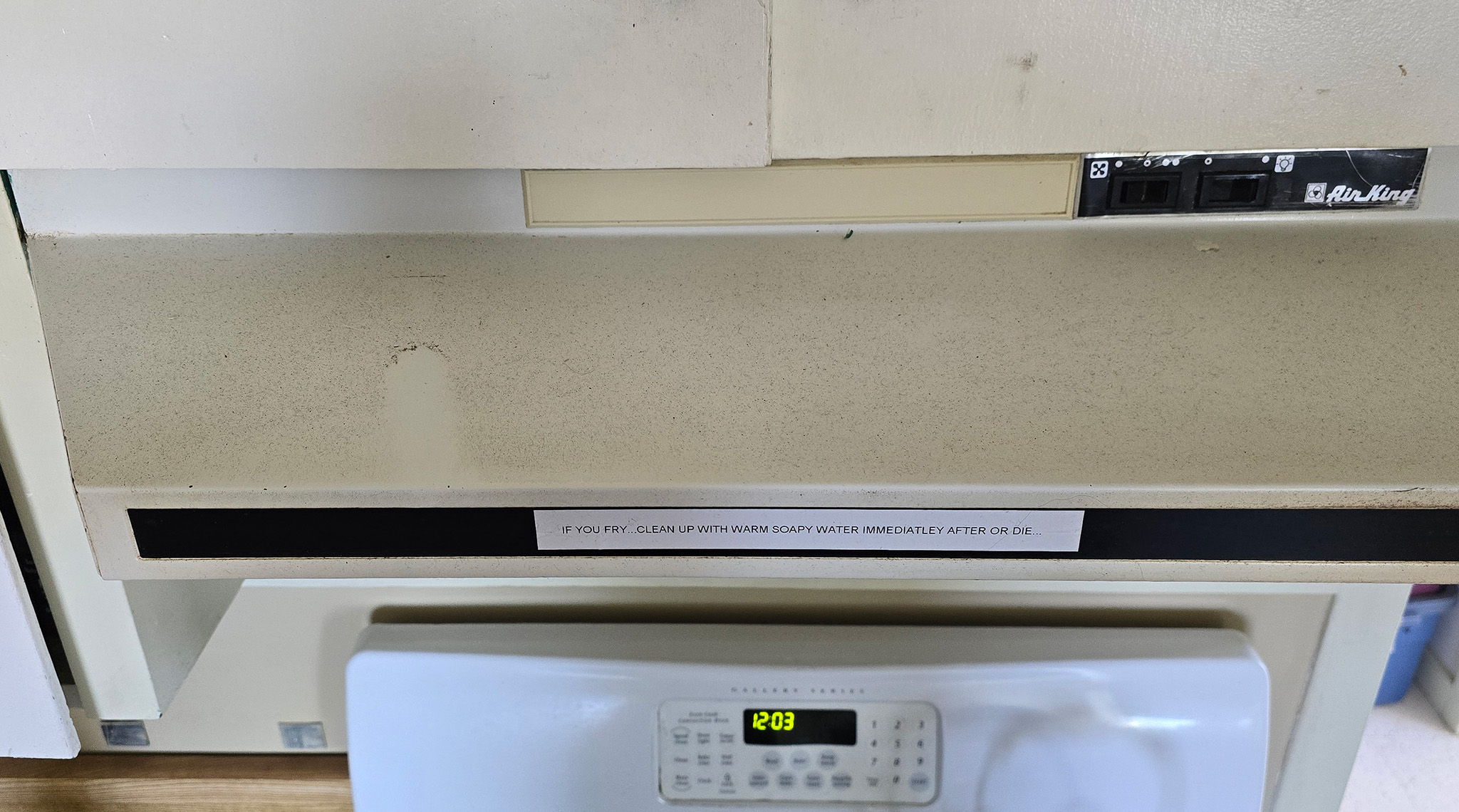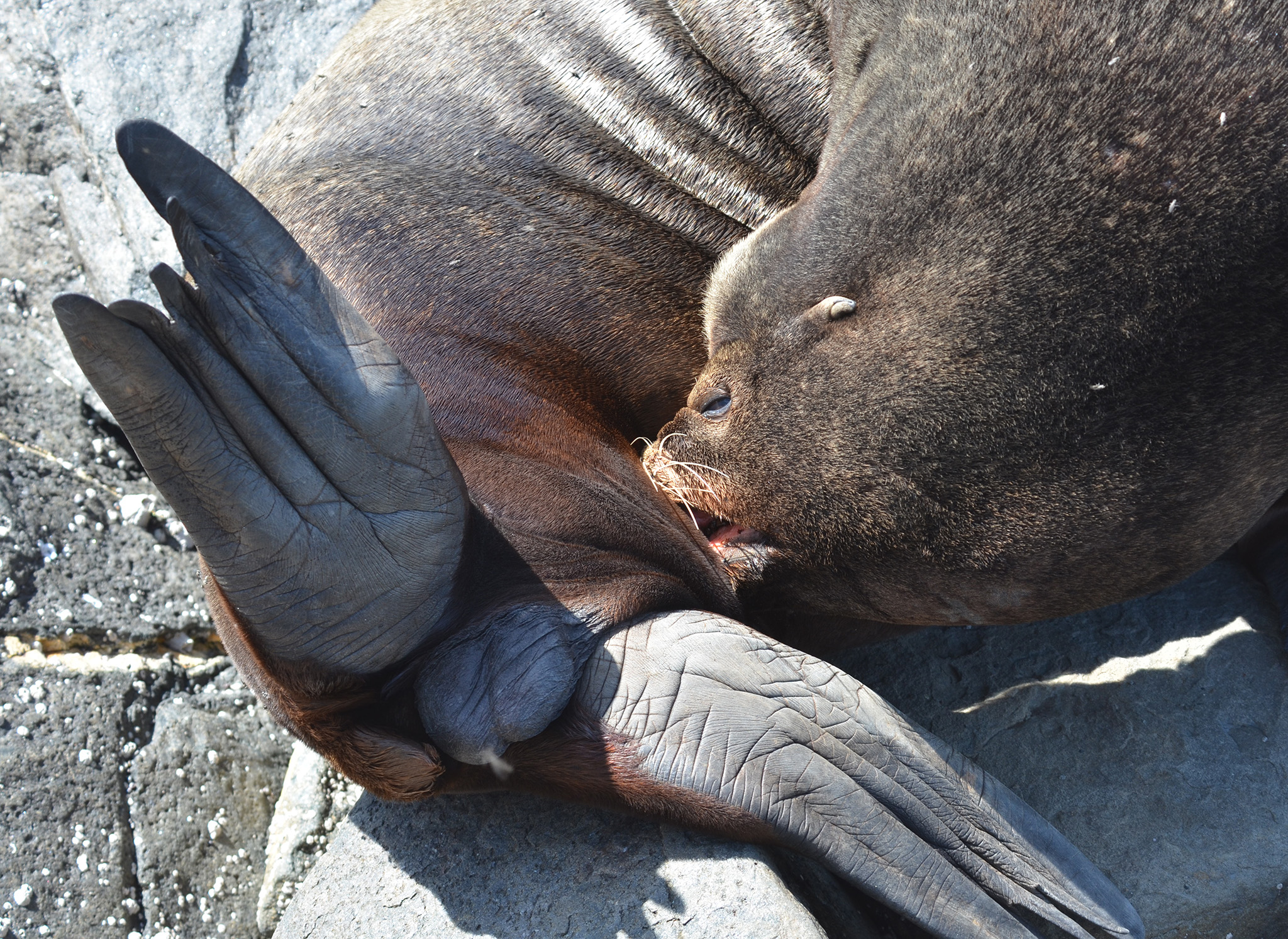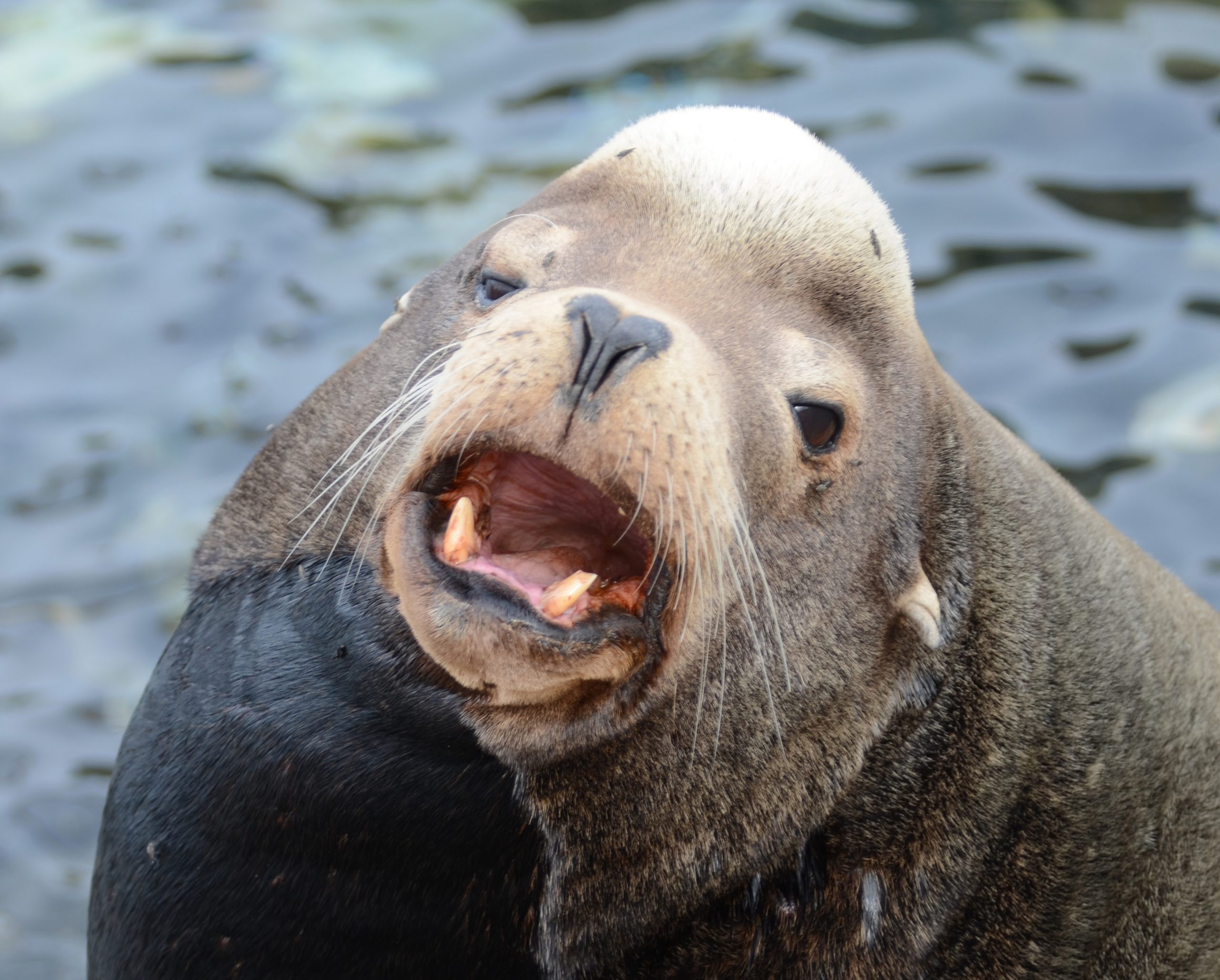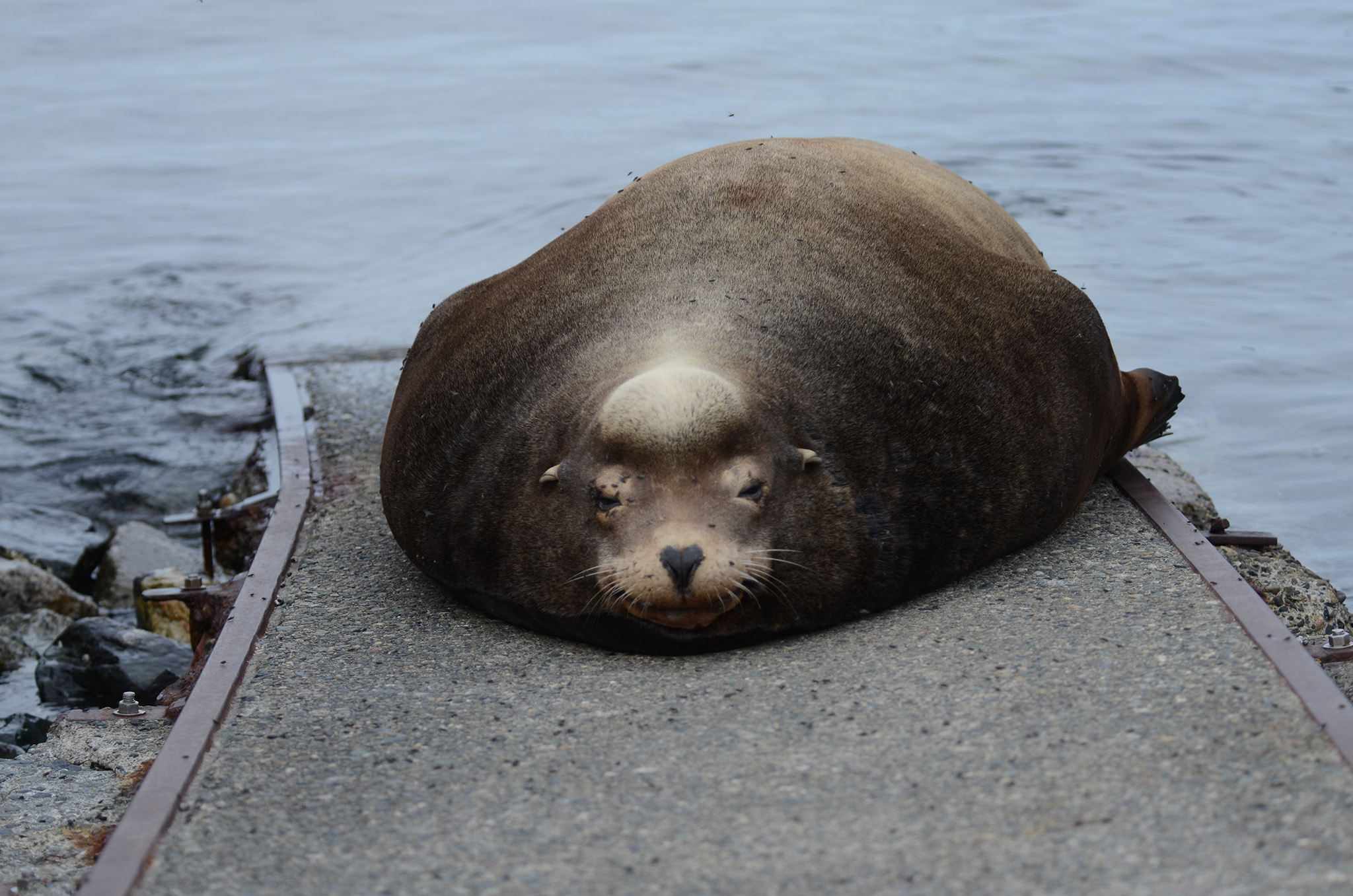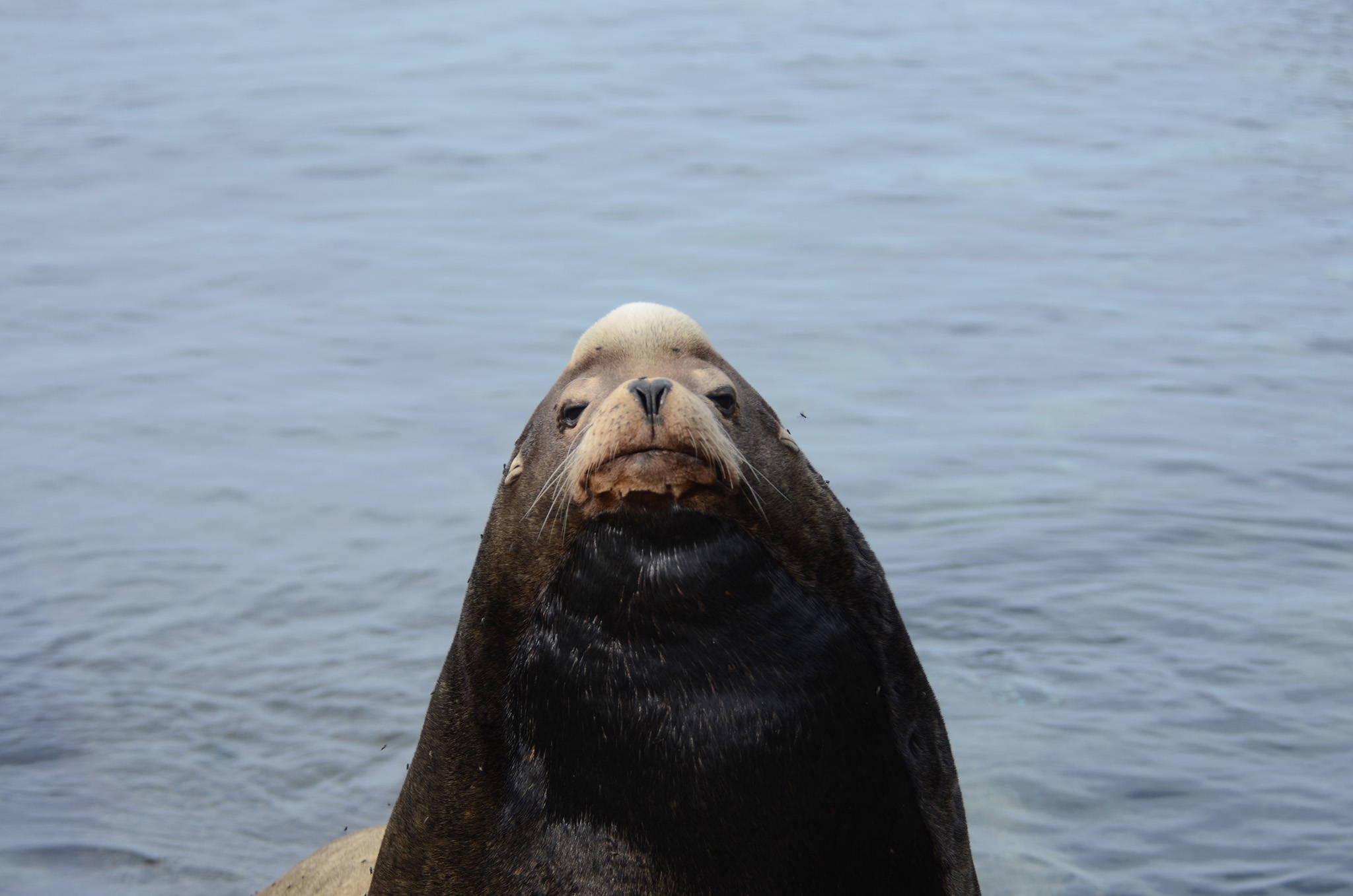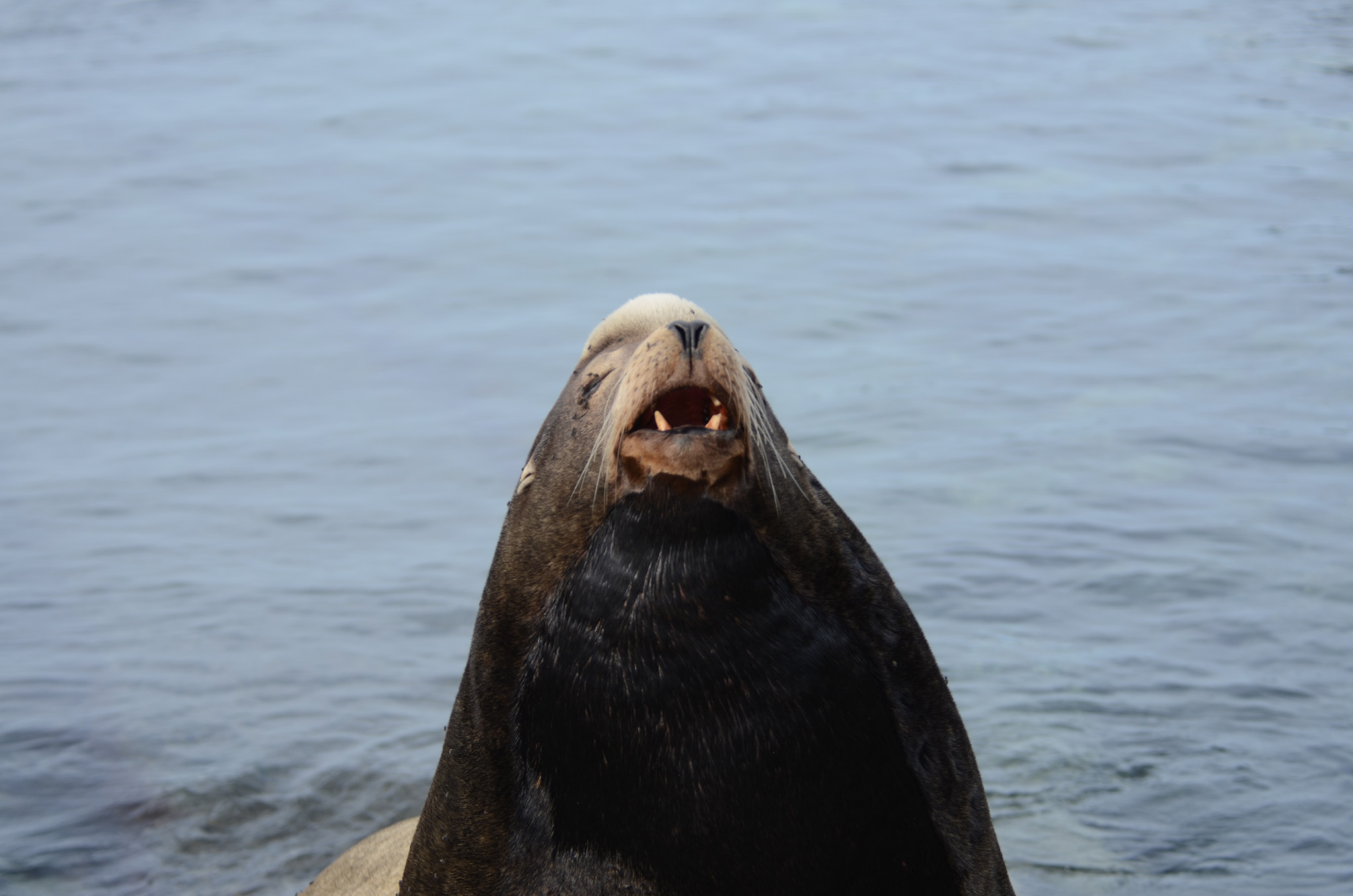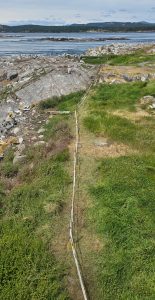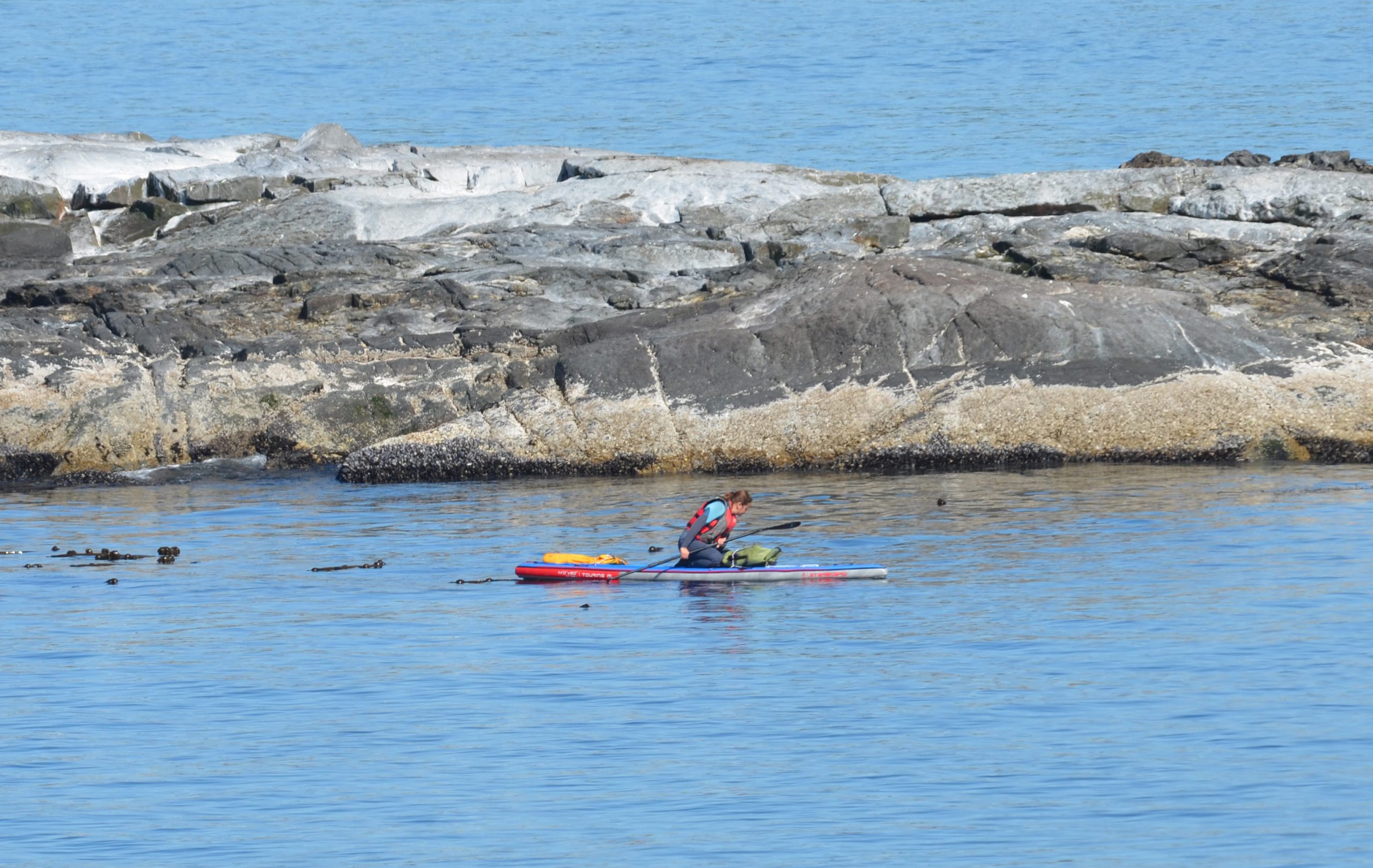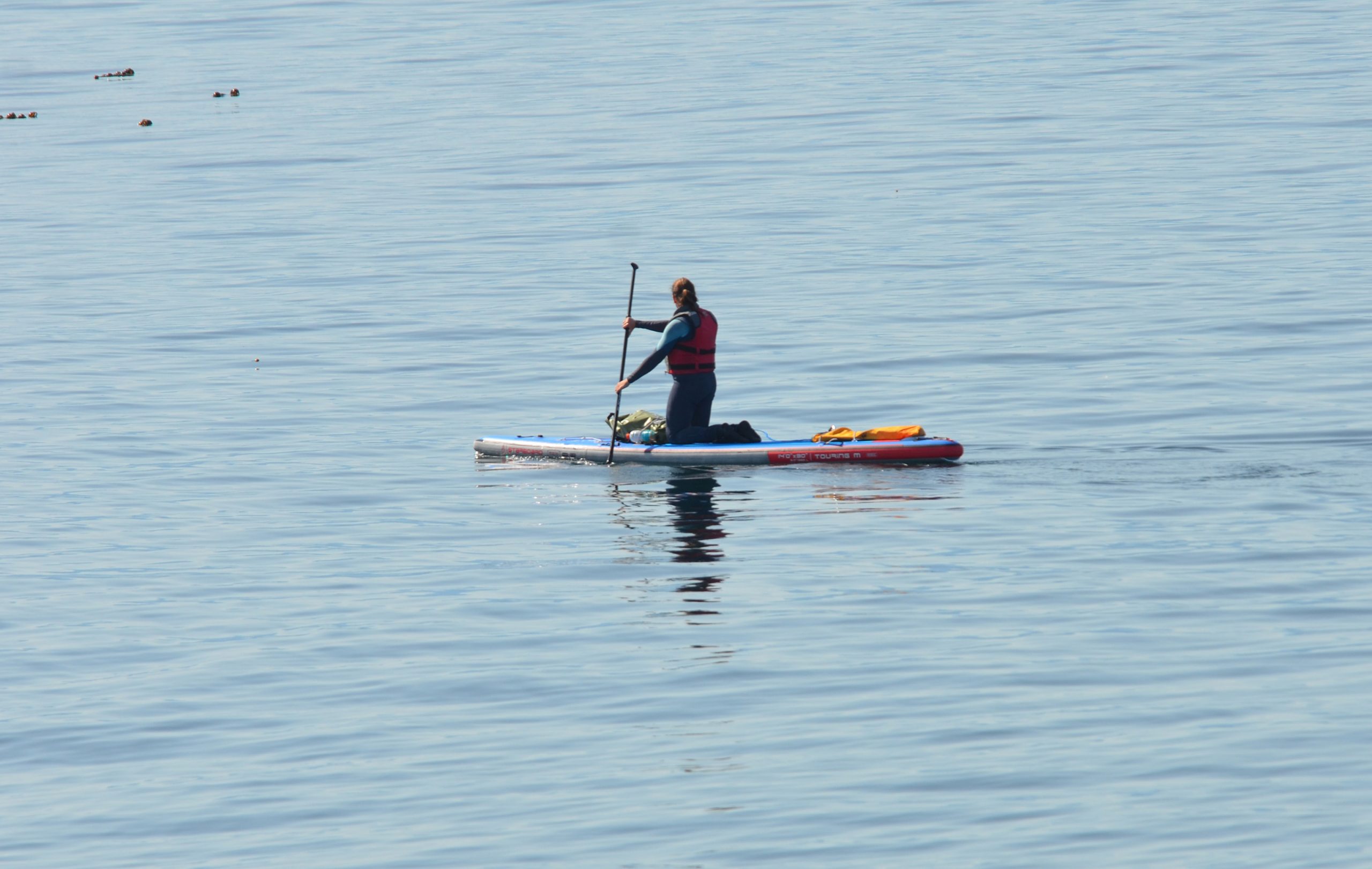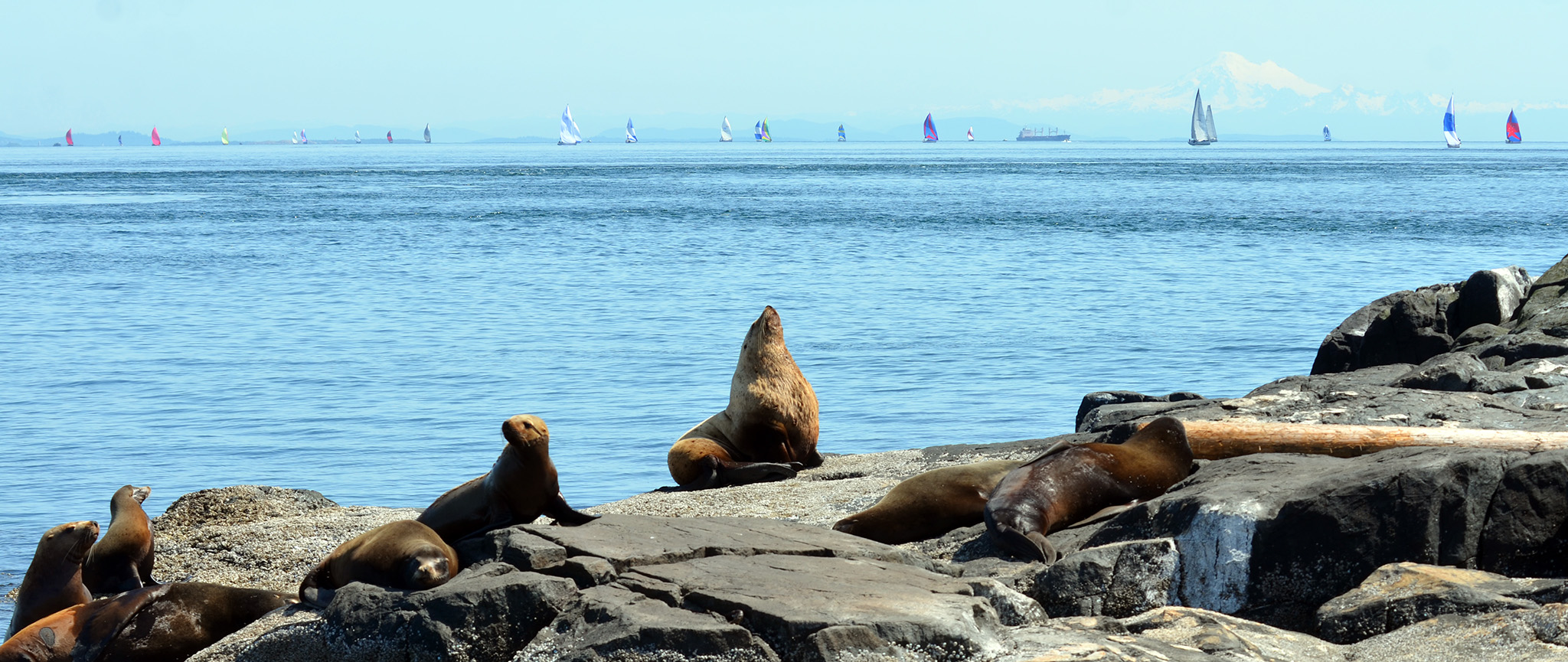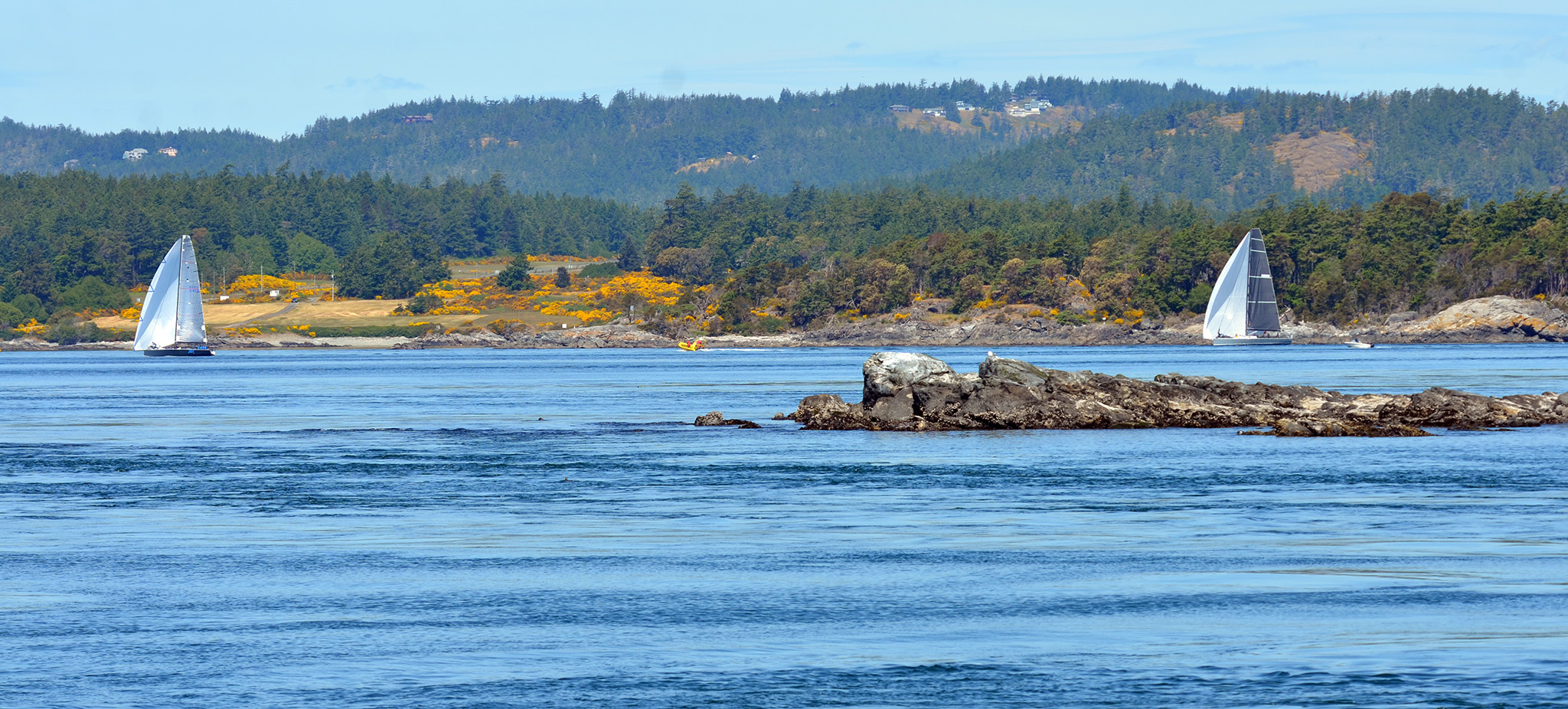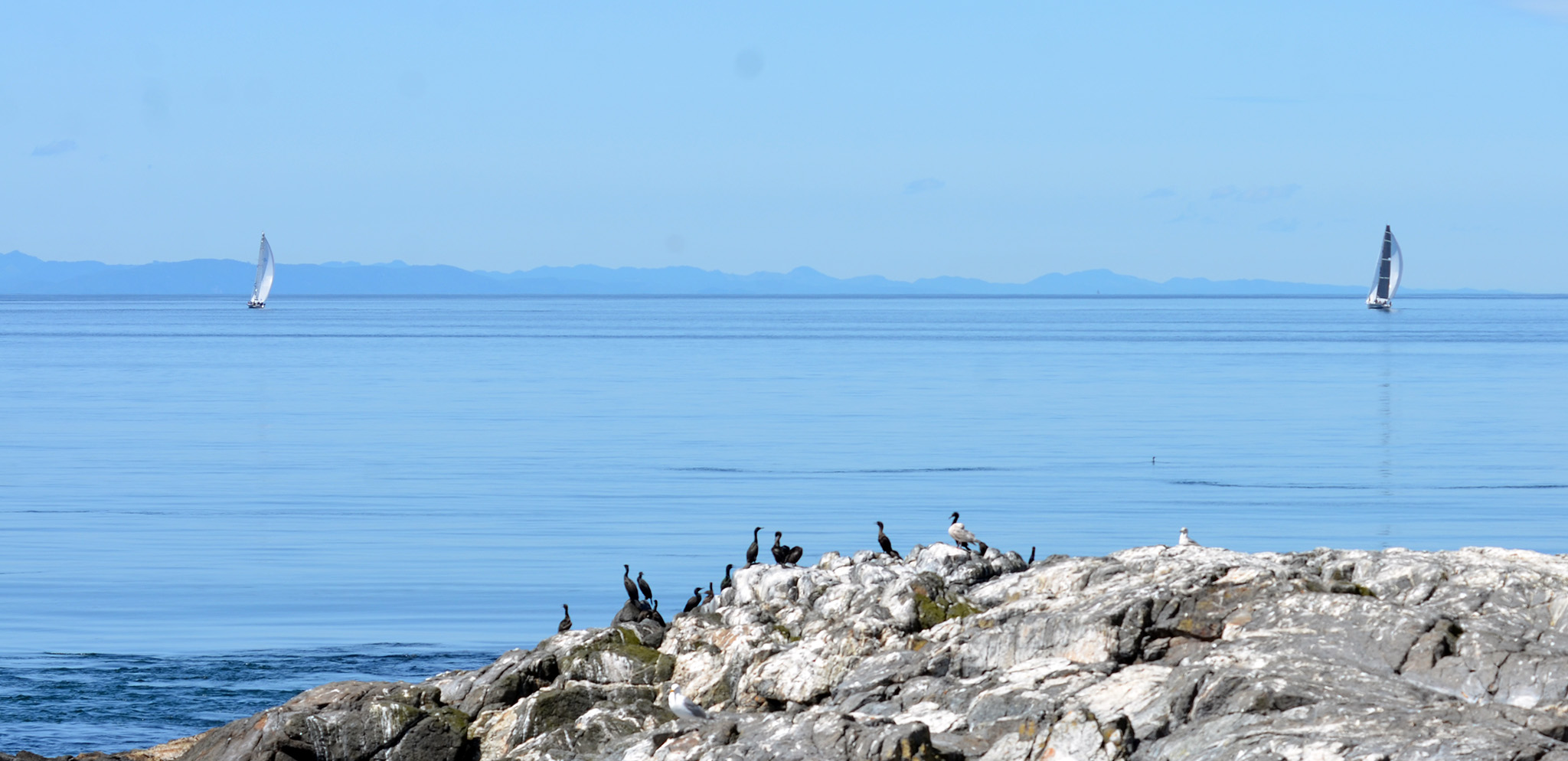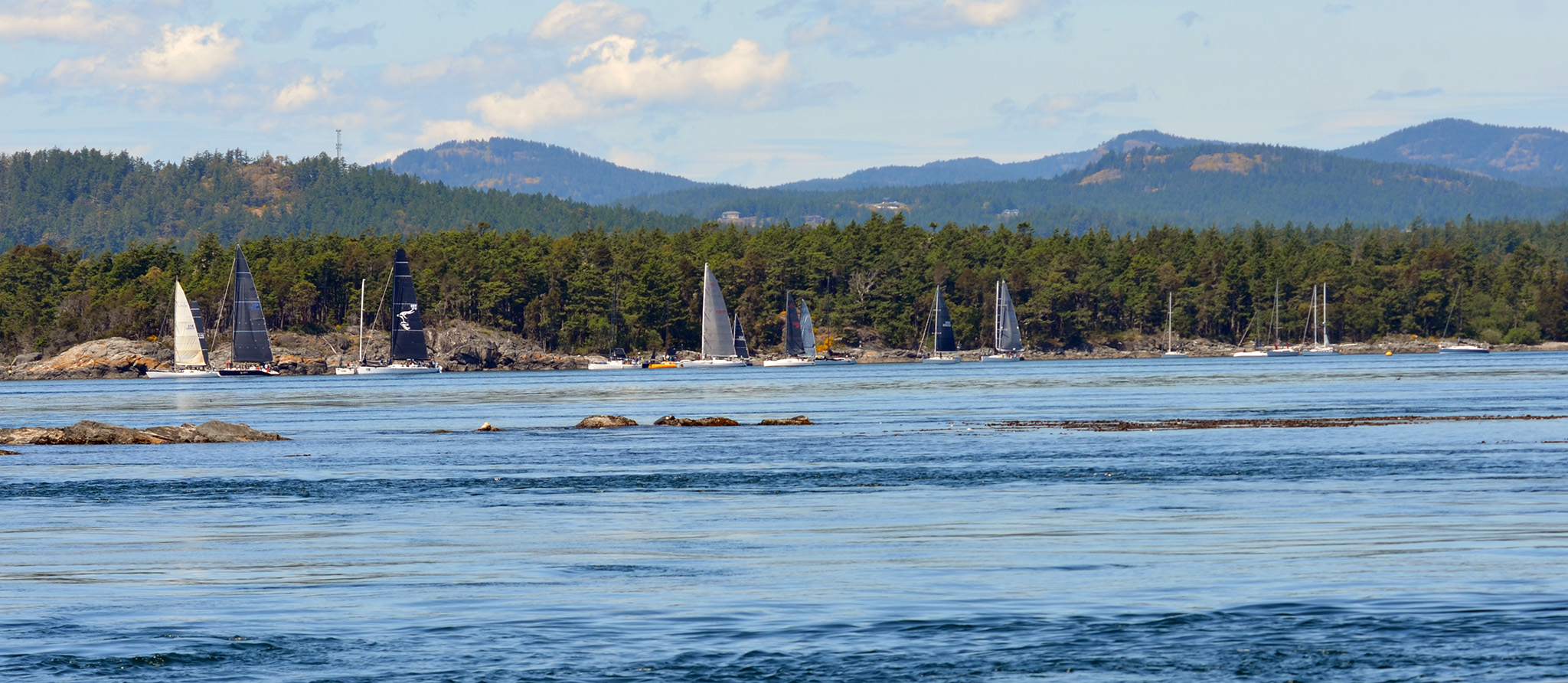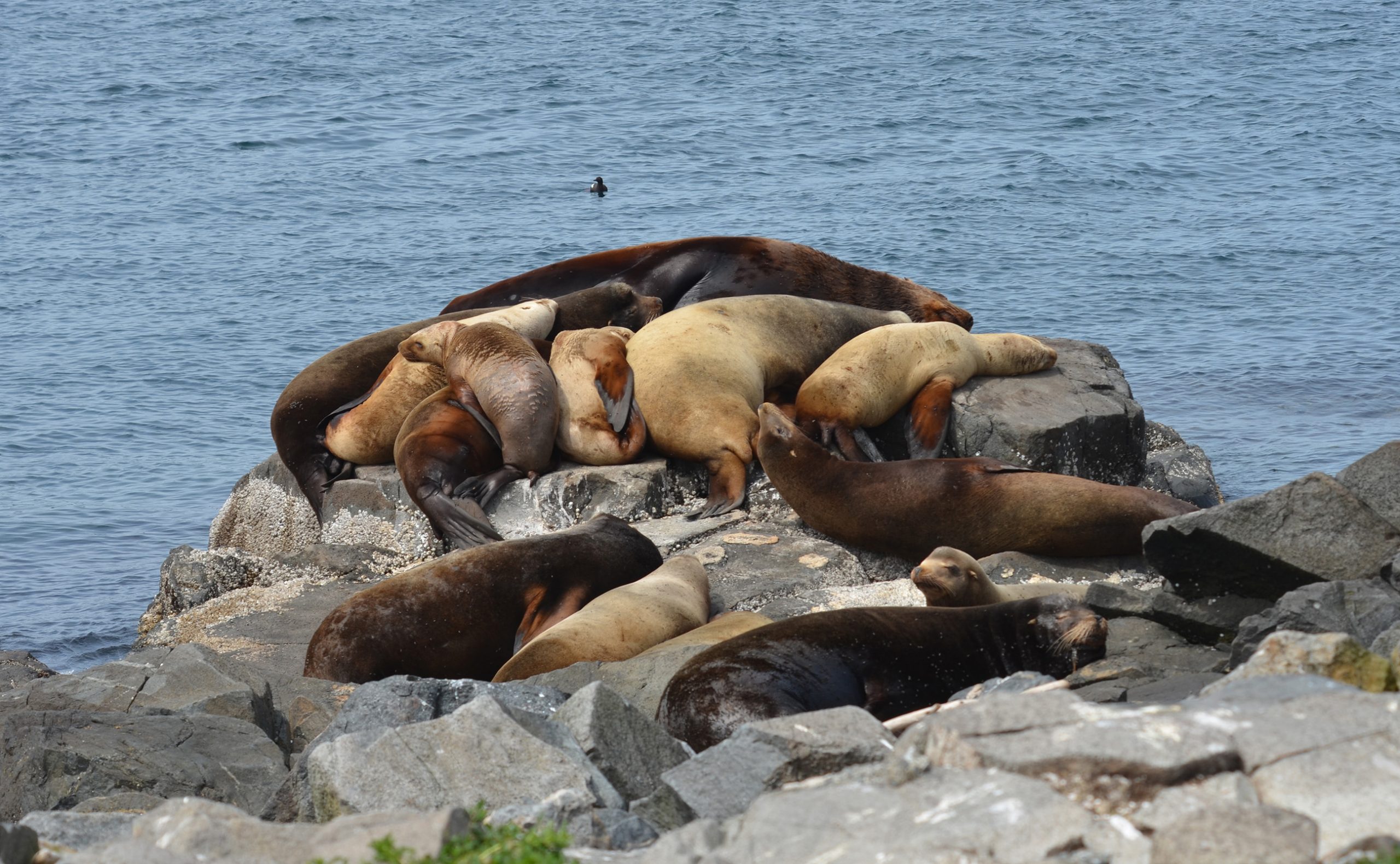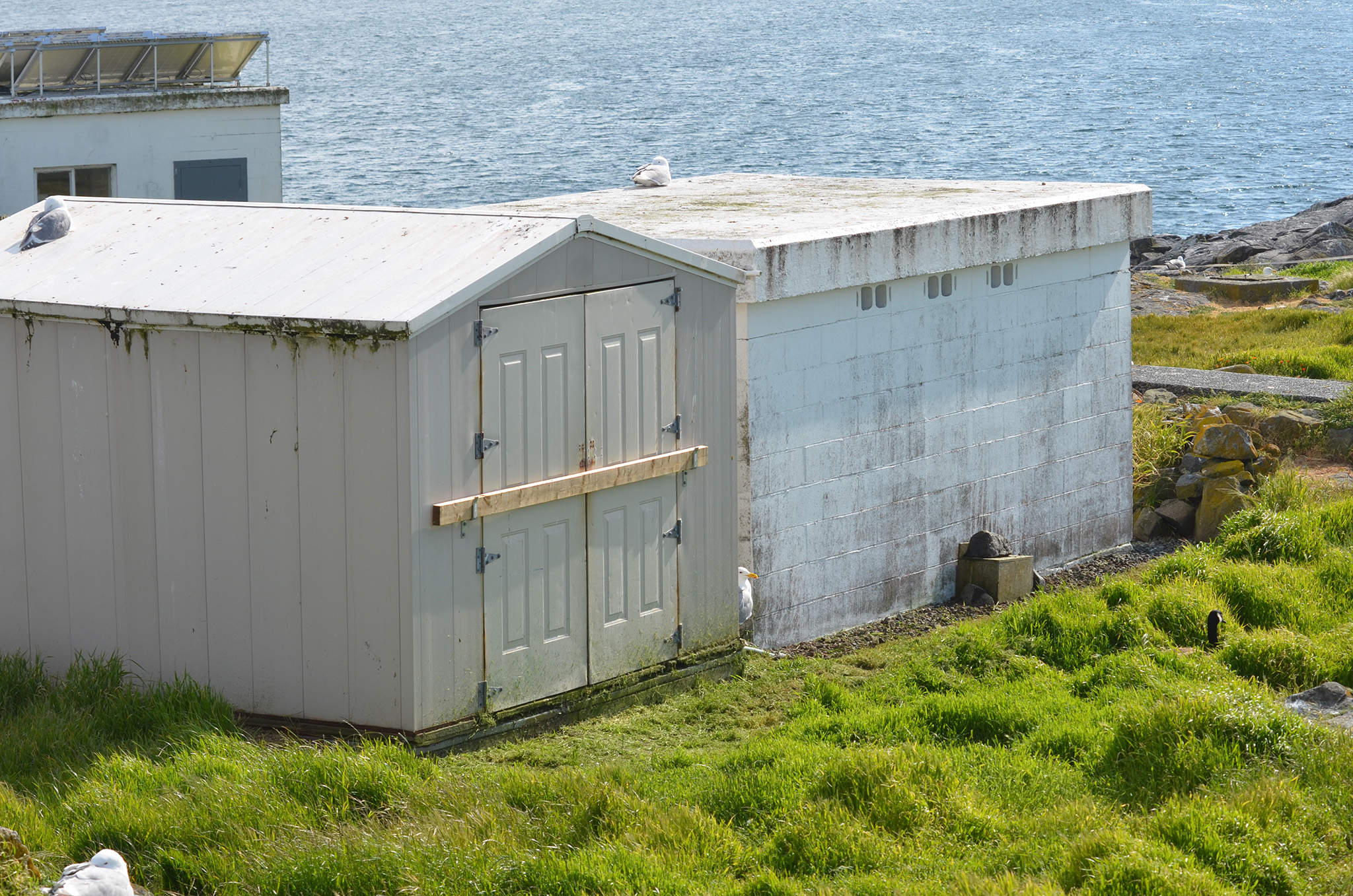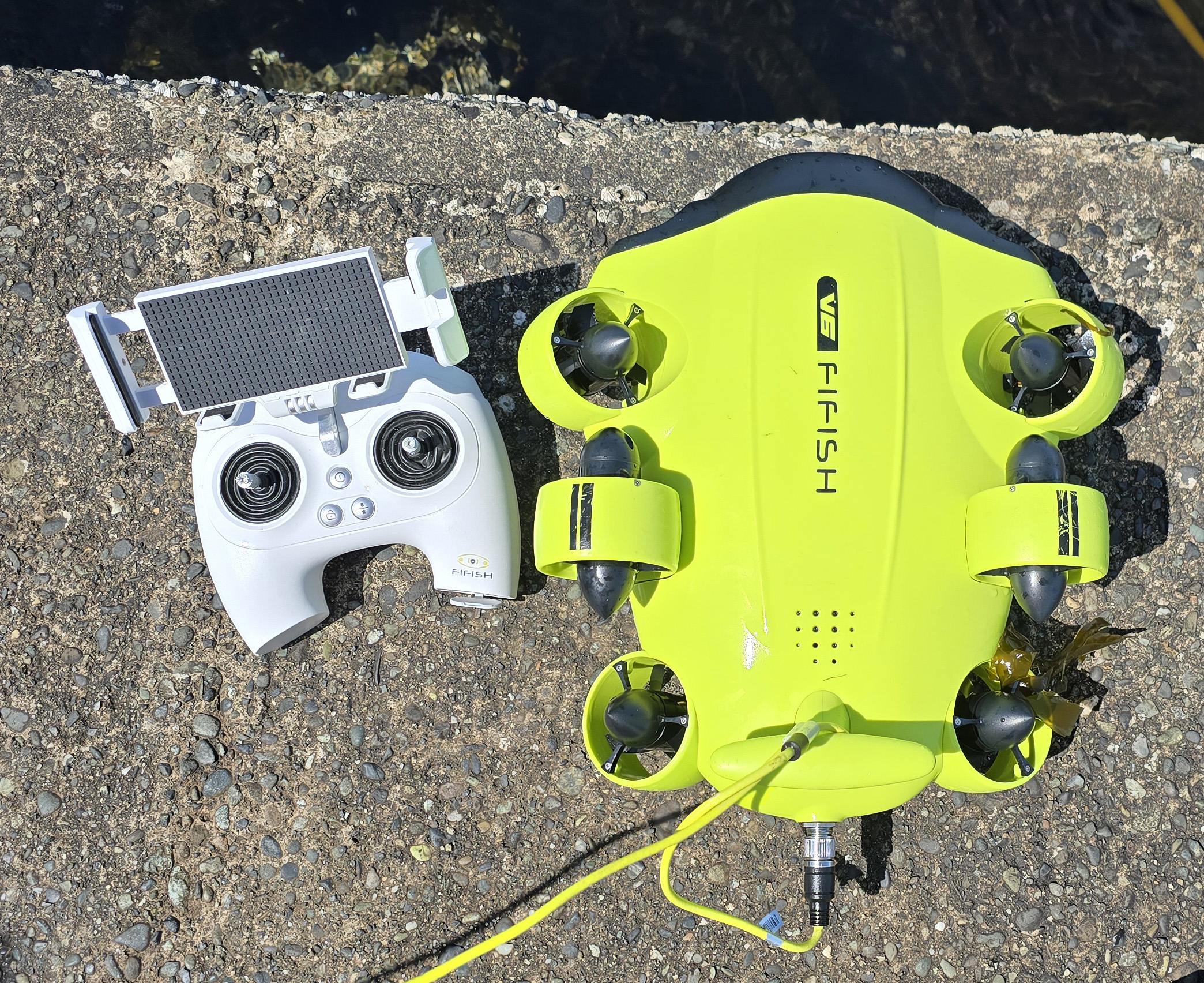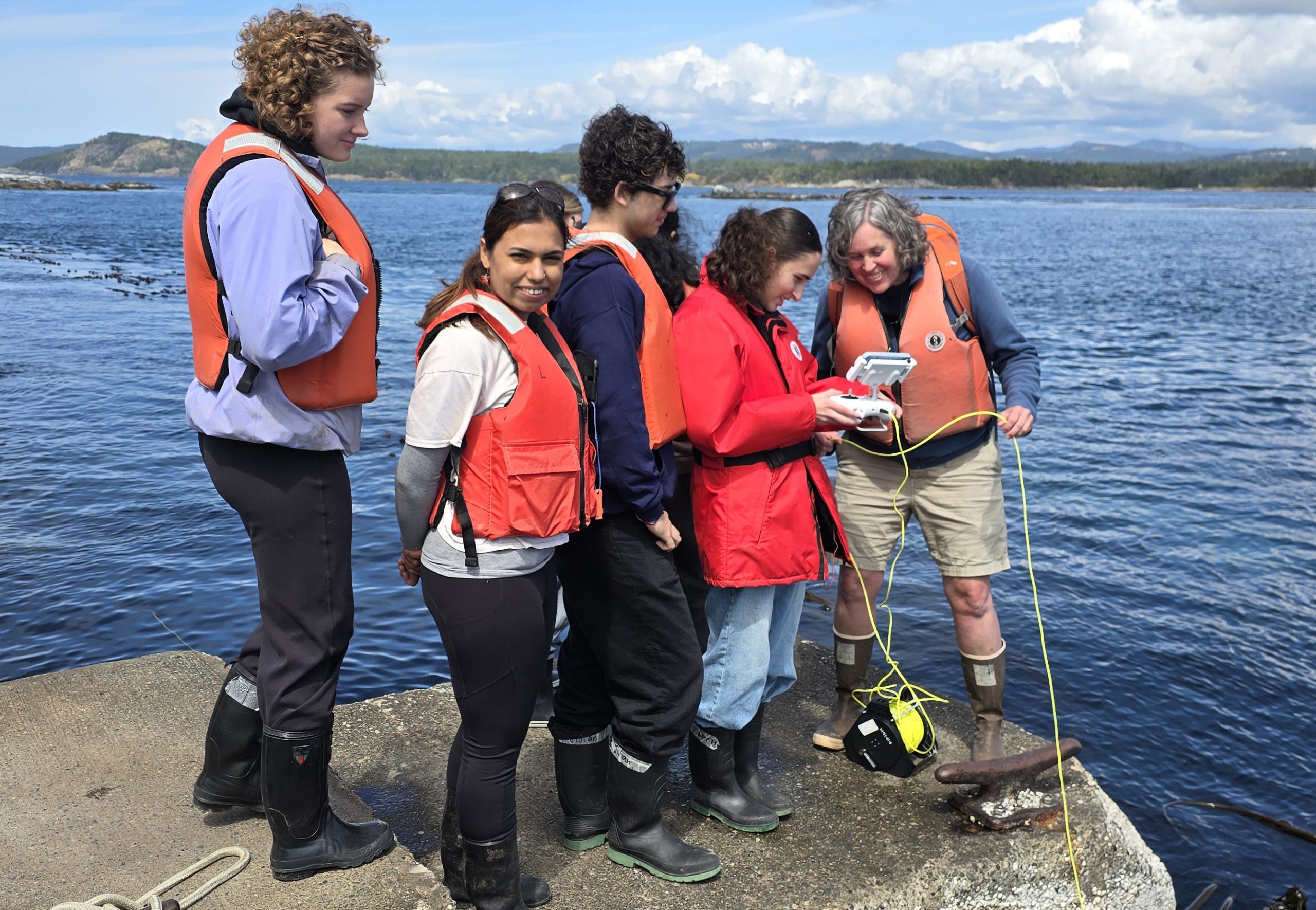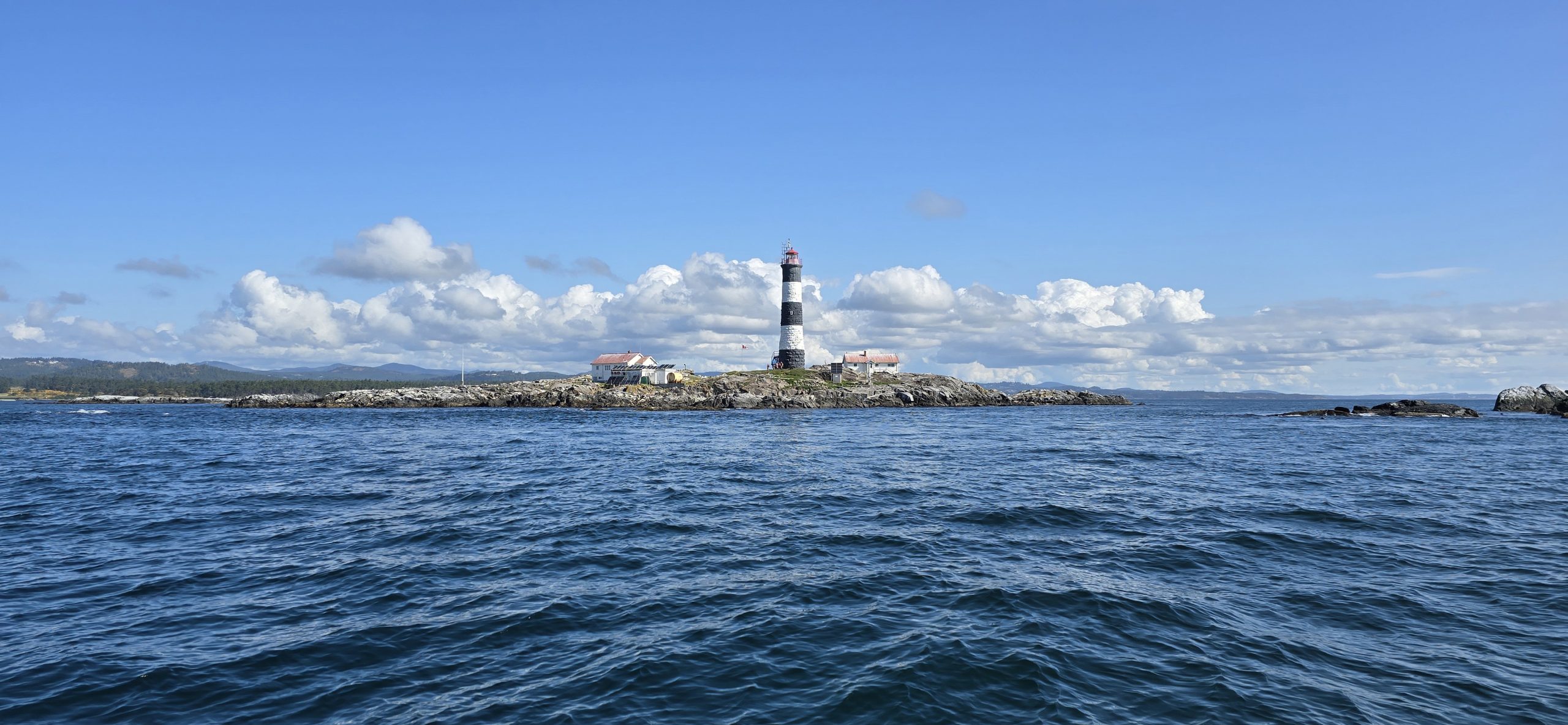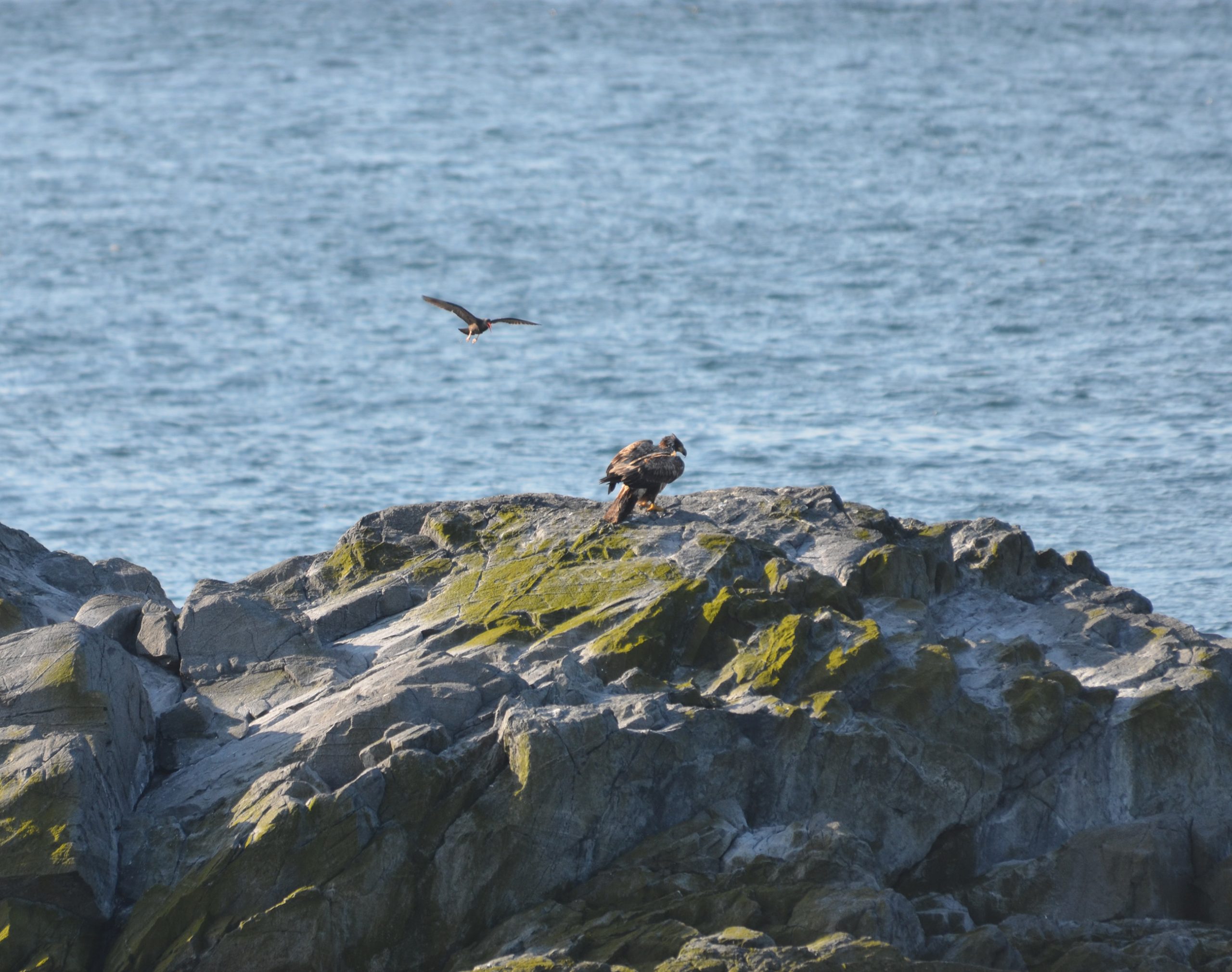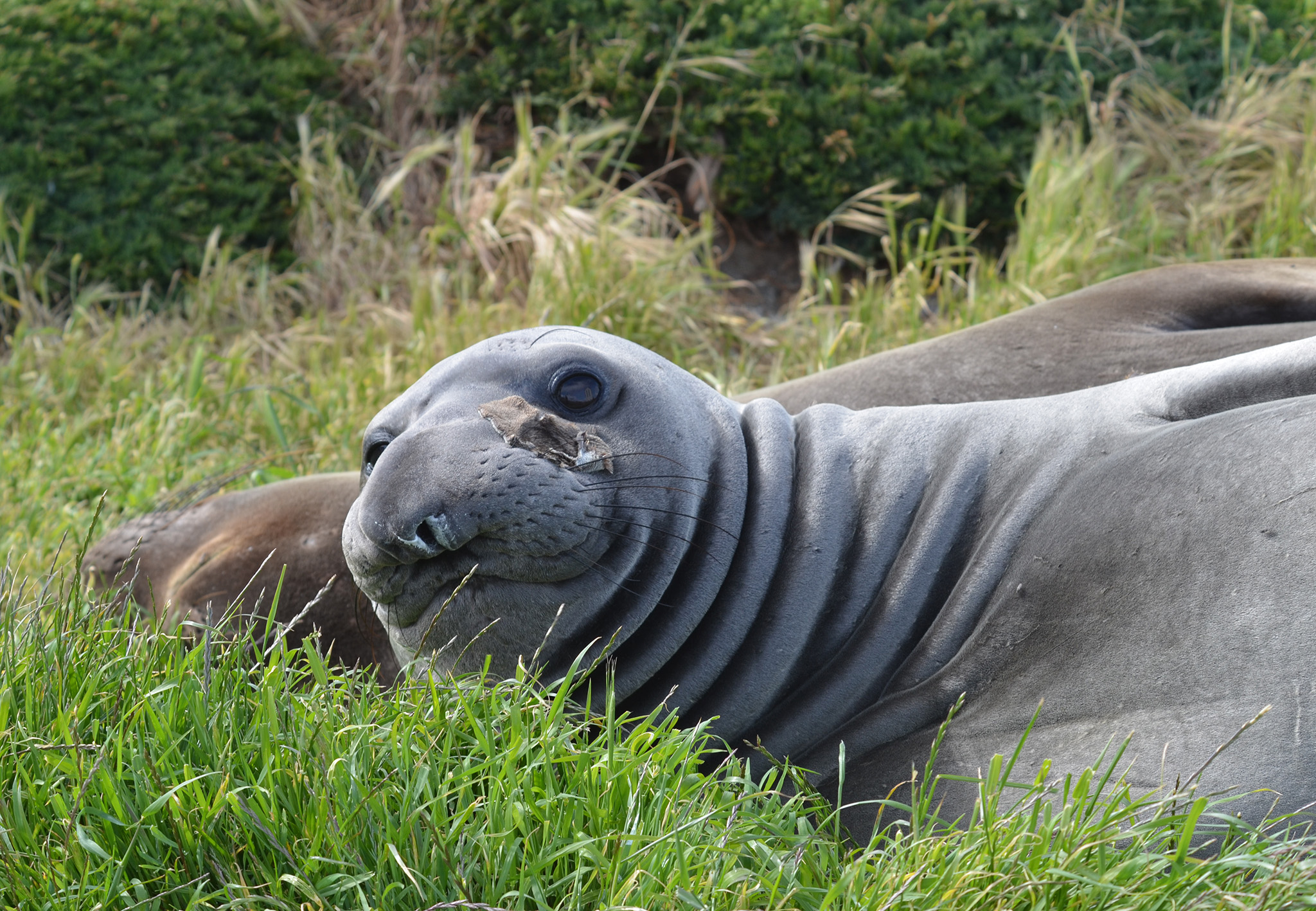Wildlife notes
The last two-year-old female elephant seal as has left. The two older females remain. I expect the smaller of the two who has completed her molt will leave soon as well.
Egg laying continues with more gulls sitting on their nests. Other than eagles wreaking havoc in the gull colony, no unusual sightings today.
- Perfect perch on the hillside
- She doesn’t have a great view of the ocean from here but a good sense of what the troublesome neighbours are up to and of the activity in the field
Today was a busy day with much house cleaning (floors, bathroom, and the stove) and laundry (used 150L of water for this task, now down to 1600L).
- Before
- After my hands gave out
It was a bit confusing today trying to get the batteries up to 100% charge. I had to run two 3 hour equalization charges back to back, but finally we got there. The graph below is a screenshot from OPTICSRE the software that controls the power system. The graph is for the events of today. The left axis is power (kWh) and the right axis is percent from 0 to 100, for both battery voltage (V) and state of charge (SOC).
Grey bars are the load on the batteries to run the house etc (kWh).
Green bars are what the solar panels are producing (kWh).
Pink bars are what the generator is producing (kWh).
The good news happened after 15:00 when the two lines (voltage and SOC) crossed. By 17:00 the batteries were at 100% charge. This was much needed as the last time the batteries were fully charged was on May 20th. A pleasant end to the busy day.
Facility work
- DID NOT clean solar panels – too windy to be on the roof
- ran equalization charges on the batteries
- cleaned house
Vessels
- ecotourism: 4
- private: 1
Weather
Rain ending in the morning, skies clearing and sunny throughout the day. Strong to gale force westerly winds, 22 to 37 knots. Daytime temperatures: low 9, high 14

